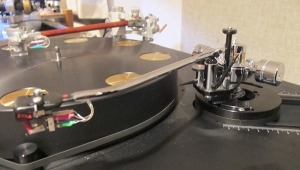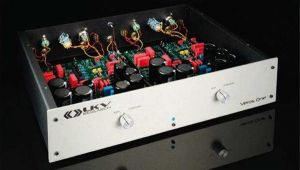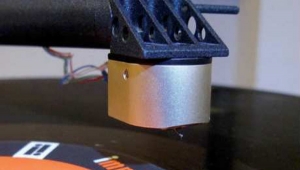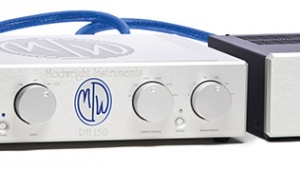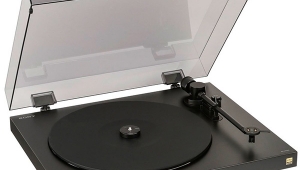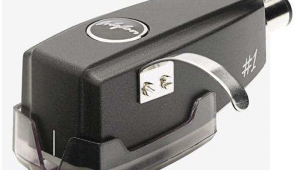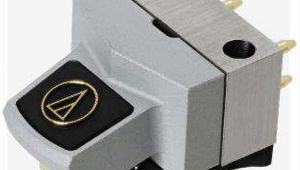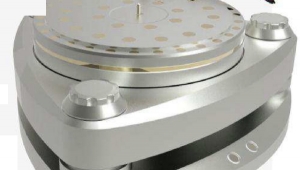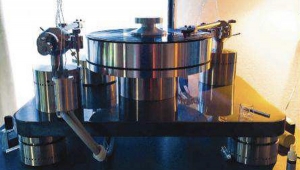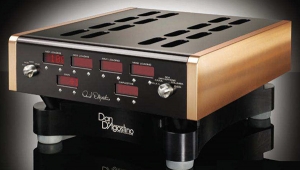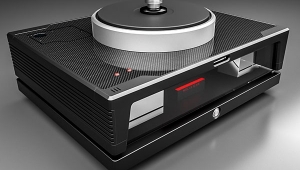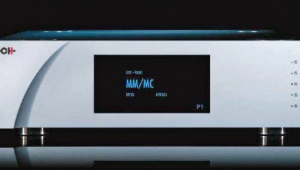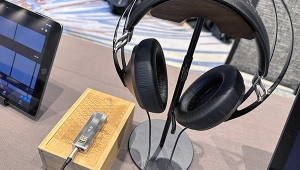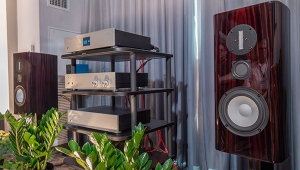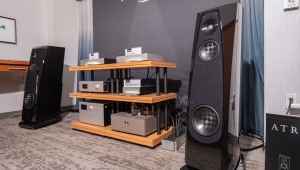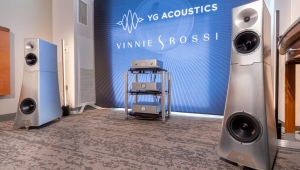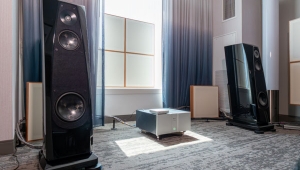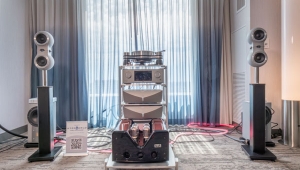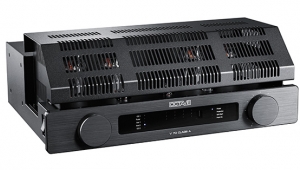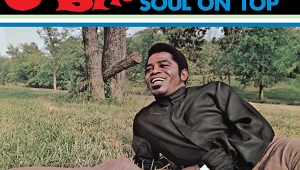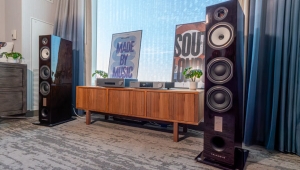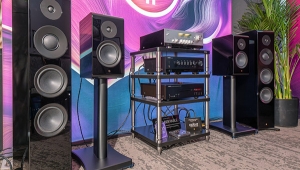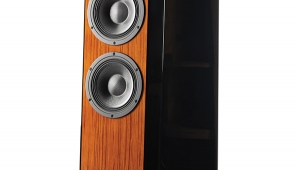| Columns Retired Columns & Blogs |
Analog Corner #263: Zesto Andros Téssera phono preamp & Acoustic Signature Ascona turntable and TA-9000 tonearm Page 2
I'd played test pressings of Bloodlines, a boxed set comprising the first four albums by Blood, Sweat & Tears (8 45rpm LPs, Columbia/Legacy/Analogue Productions APP BSTBOX-45), through both the Ypsilon VPS-100/MC-16L and CH Precision P1/X1 that I wrote about in the April and June issues, and had gotten a good handle on the sound of Ryan K. Smith's remastering, at Sterling Sound, from the original tapes: ultra-transparent, superdetailed, forceful, fully extended on bottom, and a bit forward in the presence region (as are most Smith remasterings).
Footnote 2: Acoustic Signature, AS-Distribution GmbH, Ulmer Strasse 123, D-73037 Göppingen. Germany. Tel: (49) (0)7161-3898135. Fax: (49) (0)7161-3898137. Web: www.acoustic-signature.com. US distributor: Fidelis Music Systems, 460 Amherst Street (Route 101A), Nashua, NH 03063. Tel: (603) 880-4434. Fax: (603) 880-4433. Web: www.fidelisav.com
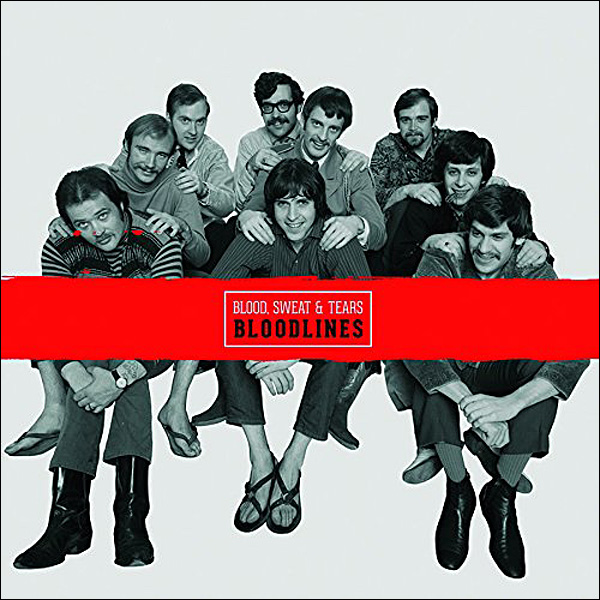
Despite the cackling and goofy stuff, my favorite BS&T album is still their first, Child Is Father to the Man, with Al Kooper. I'd thought my 1A original pressing was unbeatable, but this reissue kills it in every way, revealing heretofore hidden musical details, and delivering, with far greater precision and dynamic thrust, what was always out front in the mix. At first, the still relatively un-broken-in Téssera's rendering added unwanted glare to the horns while slobbering over the bass lines—the same colorations I'd heard with the Monk album.
But by the time a finished copy of the BS&T set had arrived, the Téssera was fully broken in and sitting on the Stillpoints. I gave Child Is Father to the Man another spin. The glare was gone, the bottom end had tightened considerably, and, thankfully, the addictive midrange remained.
Which was what I'd expected to hear. Once the Téssera had settled in, everything I played sounded "right" within the context of how a properly designed and tricked-out, 12AX7-based phono preamp should sound: fully extended on top, with precise, finely focused transients and an abundance of air; rich, even voluptuous mids; and a generous, fully expressed bottom end that fit well with the mids, but was hardly the last word in terms of grip, authority, and punch—although, overall, dynamics were very good, helped by the low noise floor. In short, the Andros Téssera traded bottom-end authority and grippy bass for the fully developed textures and sonorous midrange that even the best solid-state designs somewhat lose track of.
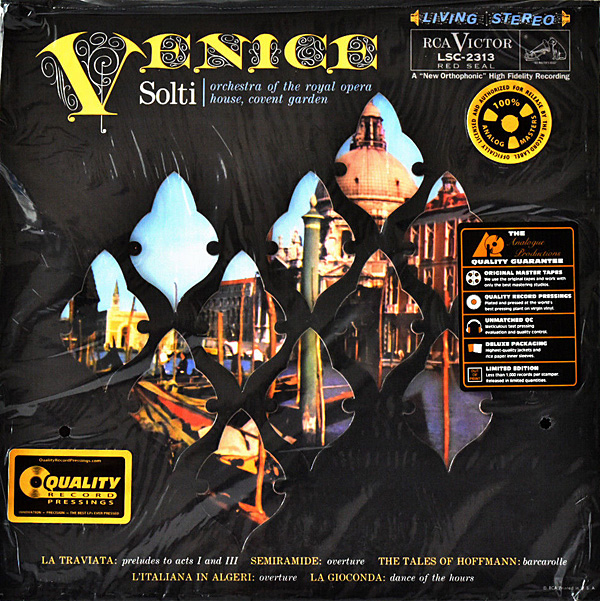
I then compared two pressings of Venice, with Georg Solti conducting the Orchestra of the Royal Opera House Convent Garden in instrumental music from various Italian operas: an original (LP, RCA Living Stereo LSC-2313) and a reissue (200gm LP, Analogue Productions AAPC 2313). Instead of obscuring the differences between them under a blanket of tube warmth, the Téssera made them clear. On the RCA, engineered by Kenneth Wilkinson at Kingsway Hall and originally recorded for UK Decca, the strings are to melt from; on the reissue, they're somewhat drier and less effusive, though more detailed. The Téssera let me hear those differences, but compared to the Ypsilon or the CH Precision, it also exacerbated the recording's problematic bass.
The Andros Téssera's less than fully controlled, somewhat larger-than-life bottom end was its only less-than-stellar attribute. This is something it shares with tubed phono preamps in general, though whether or not it will be a problem for you will depend on the extension and quality of your speakers' bass, and the kind of music you listen to. Acoustic music, particularly jazz and classical, thrived in the Andros Téssera's hands; hard rock did somewhat less well. As with any audio component, your reaction to it will depend on what you're willing to give up. There are always tradeoffs.
That said, I stand by what I wrote about Zesto Audio's Andros PS1—and, for its overall finesse and host of attractive sonic qualities, what I can now say about the Andros Téssera: it's "among the more enjoyable and satisfying phono preamplifiers I've auditioned at any price."
Acoustic Signature's revised Ascona Mk.2 turntable and TA-9000 tonearm
Recently, on AnalogPlanet, I wrote about Shinola's Runwell turntable. The review was mostly positive, but I thought the Runwell had some serious problems that needed addressing. Instead of being angry at getting a less-than-glowing review, Shinola thanked me for pointing out the problems, so that they could be fixed.
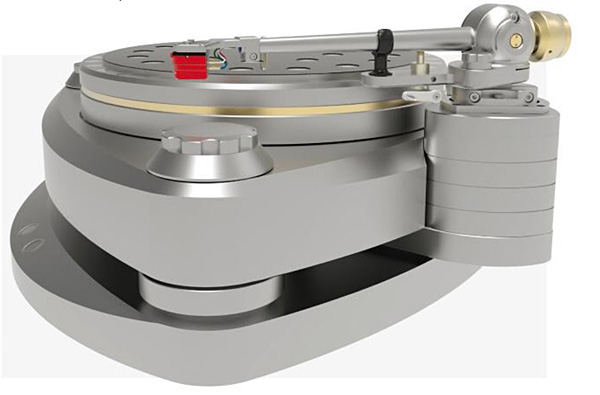
Likewise, rather than getting hot under the collar, Acoustic Signature's Gunther Frohnhöfer noted what I'd written in my December 2016 column about his Ascona Mk.2 turntable and TA-9000 tonearm (footnote 2), and set about improving both. He then asked me to give them another listen, and I happily accepted.
The original TA-9000 tonearm was surprisingly lively. A light tap on its armtube with the volume at a moderate level produced a loud, seemingly undamped sound through the speakers. In the update, the tonearm's internal structure has been redesigned. Tapping on it with the volume up now produced a barely audible, well-damped tink. The bearing housing now includes a binding bolt that greatly increases the housing's mechanical rigidity, and a new titanium headshell replaces the original one of aluminum.
The original TA-9000 lacked convenient and easily repeatable settings of vertical tracking angle (VTA) and stylus rake angle (SRA). If you loosened the grub screw holding the pillar in place, the arm would simply drop. While that might be okay in a budget-priced tonearm, I felt that one costing $17,995 should provide something better. The new TA-9000 features an ingenious gear system that raises and lowers the pillar, which, once properly set, can then be securely clamped in place.
With a low-compliance cartridge mounted in the original arm, I couldn't measure its horizontal and vertical resonant frequencies, which suggested that those resonances occurred at frequencies outside the test-band range of the Hi-Fi News & Record Review Test Record (LP, Hi-Fi News HFN 001)—surprising, given the arm's stated effective mass. This time, the resonances were visibly and audibly within the ideal window of 8–12Hz.
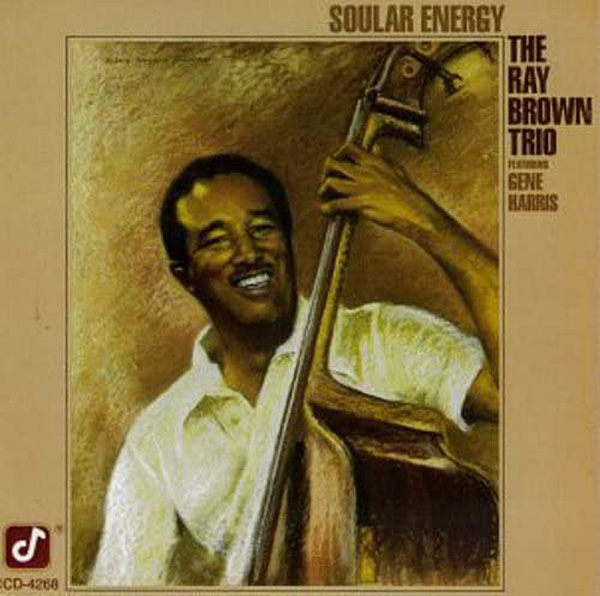
Frohnhöfer has made the biggest improvements in the Ascona Mk.2 turntable, and they're audible, measurable, and significant. The original Ascona Mk.2 sounded overdamped—while pleasing in the midrange, it lacked drive, and music sounded trapped inside the turntable. Bass, even with the Swedish Analog Technologies tonearm, was less than fully expressed. The Ray Brown Trio's Soular Energy (2 45rpm LPs, Concord Jazz/Analogue Productions APJ-268-45) exposed the original Ascona Mk.2's stifling of instrumental decays, which were unnaturally short. This made Gene Harris's piano sound tinkly; on leaving the instrument, bass notes seemed to immediately dry up.
Frohnhöfer redesigned the interface between the upper and lower chassis, replacing the top's three domed brass feet with a new magnetic-repulsion system he claims fully isolates the upper and lower chassis from each other. "Floating" the upper chassis, Frohnhöfer says, produces greater dynamics and "speed."
He also replaced the single belt that looped around all three motor pulleys with a three-belt configuration that increases the area of each belt that comes in contact with the subplatter. The belts are of differing Shore hardnesses (something I first saw in the Döhmann Helix 1 turntable), which Frohnhöfer says minimizes, or better distributes among the belts, the "beating" produced by friction and belt tension. The new arrangement loops one belt completely around the subplatter and around one pulley, in the standard belt-pulley arrangement; the other two belts loop around all three pulleys, as before.
The result of that change was greater consistency of speed, as I measured using Dr. Feickert Analogue's PlatterSpeed app. The relative maximum deviation of the raw frequency (fig.1) went from –0.37%/+0.61% to –0.36%/+0.27%. The absolute maximum deviation went from –11.6Hz/+19.1Hz to –11.3Hz/+8.5Hz. The lowpass-filtered results (fig.2) were equally good: the relative max deviation went from –0.03%/+0.03% to – 0.02%/+0.01%, the absolute max deviation from –1.1Hz/+0.9Hz to –0.06Hz/+0.4Hz. A major improvement!
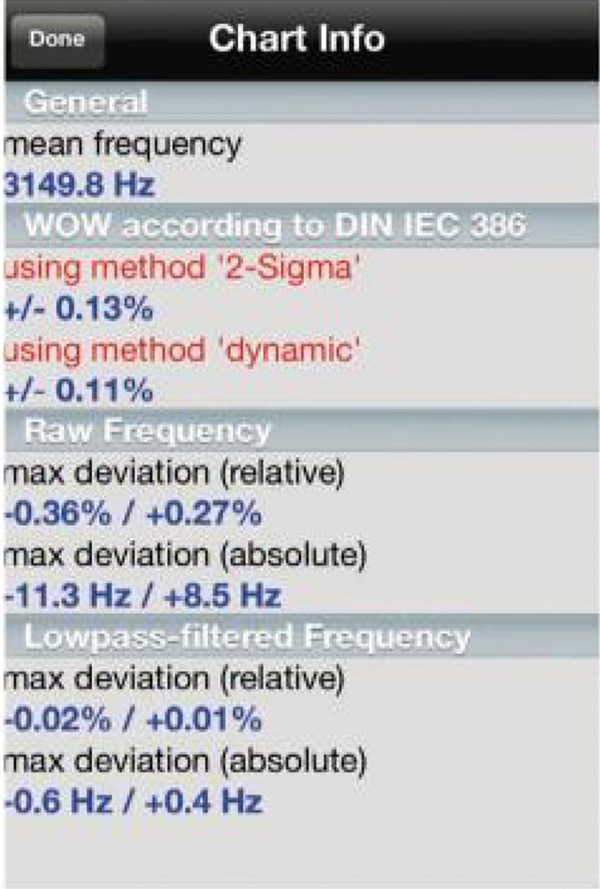
Fig.1 Acoustic Signature Ascona Mk.2, speed stability data.
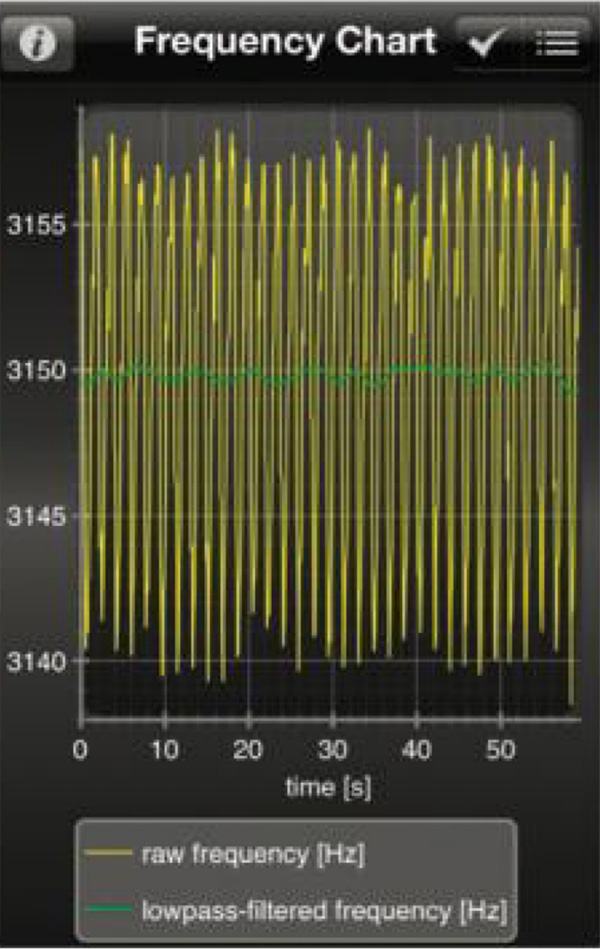
Fig.2 Acoustic Signature Ascona Mk.2, speed stability (raw frequency yellow; low-pass filtered frequency green).
Most important, the sound of the upgraded Ascona Mk.2 was far better than the one I reviewed last December. I have my original 24/96 needle drops and my new ones demonstrate the improved sound. The bass is now far more substantial and viscerally satisfying, yet well controlled. The sound has greater drive, and now seems unshackled from the turntable itself. Image three-dimensionality is greatly improved. Most critically, I think, the improved Ascona Mk.2 produces far longer decays and "blacker" backgrounds. The result is a far more natural, more believable reproduction of the music.
Although these upgrades represent considerable costs in parts and labor, owners of the original Ascona Mk.2 turntable and TA-9000 tonearm are being offered them for free. That's commendable on Acoustic Signature's part, but it's only the right thing to do. I'm told that some customers—including one who owns two Ascona Mk.2s—have already had their 'tables and arms upgraded, and that so far, all are thrilled with the improved sound.
As am I.
Footnote 2: Acoustic Signature, AS-Distribution GmbH, Ulmer Strasse 123, D-73037 Göppingen. Germany. Tel: (49) (0)7161-3898135. Fax: (49) (0)7161-3898137. Web: www.acoustic-signature.com. US distributor: Fidelis Music Systems, 460 Amherst Street (Route 101A), Nashua, NH 03063. Tel: (603) 880-4434. Fax: (603) 880-4433. Web: www.fidelisav.com
- Log in or register to post comments

